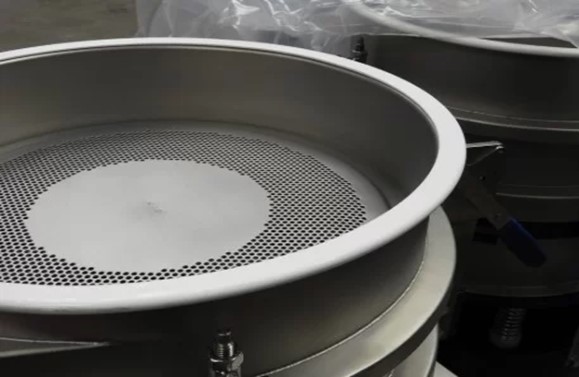Features To Consider When Buying A Industrial Batch Sieve
Home / Features To Consider When Buying A Industrial Batch Sieve

Features To Consider When Buying A Industrial Batch Sieve
 Batch sieving is an effective and reliable way to filter contaminants from raw materials during manufacturing processes, thereby improving the quality of product material. Batch sieves are also practical, easy to move and quick to clean, so are a valuable addition to any production line where the sieving of powders or liquids is required. When you’re exploring which industrial batch sieve to purchase, what features should you consider?
Batch sieving is an effective and reliable way to filter contaminants from raw materials during manufacturing processes, thereby improving the quality of product material. Batch sieves are also practical, easy to move and quick to clean, so are a valuable addition to any production line where the sieving of powders or liquids is required. When you’re exploring which industrial batch sieve to purchase, what features should you consider?
Size And Vibration Considerations
Ensuring the batch sieve is the correct size for your requirements is essential, alongside key factors such as screen area, mesh aperture, motor settings and deck rim depth. It is worth bearing in mind future increases to your manufacturing throughputs may demand a larger sieve. The type of machine vibration is also crucial and is dictated by the different solutions Gough Engineering can supply. We ensure that motor arrangements (size, weight settings and orientation) will provide you with the correct vibration for your product material.
Product Flow Requirements
Before you can choose the most suitable industrial sieve, you need to evaluate the product flow on your production line. You should consider:
- How much raw material and type of delivery will feed into the batch sieve.
- How quickly sieved material will be discharged at the different exit spouts.
- How the sieving vibration is produced with motors and if required ultrasonics.
- How much material is retained on each screen deck during sieving operations.
Depending on application, special screen features, recommended by Gough’s design experience in many applications, can aid material flow and sieving.
By taking these factors into account, you can avoid complications such as blinding or pegging, poor flow or generally poor sieving operations.
Application Understanding
Application factors vary considerably between processes and industries, so understanding the behaviour of your material will help you make an informed decision about the type of batch sieve you need. Application requirements to consider include:
- Sieving and classification requirements by particle sizes.
- Product bulk density and volume density.
- Material feed in rates.
- The flow of the product material through the mesh aperture.
- Moisture content.
- Product and environmental condition such as temperature.
Process Understanding
The industrial batch sieve is only one component of a wider range of equipment. When choosing the best sieve, it’s important to think about two other aspects of the process: feed and discharge.
1) Feed method: industrial vibrating feeders deliver a consistent flow so that raw materials are fed to the batch sieve evenly and to the mesh centre.
2) Discharge: as raw materials are passed through the batch sieve, they will need to be moved to the next stage of production, which may be a collection bin, conveyor, aero-mechanical elevator, or screw conveyor – all have to be considered.
Contact Us For Expert Technical Support
As a leading UK supplier of high-quality industrial sieving machines, we can supply a batch sieve that meets your exact production and performance needs. To find out more, please call us on 01782 567770 or send us an enquiry.
Other Articles
- From rubbish to recycled
- Circular separators versus linear separators
- The power of gentle handling with bucket elevators
- Meeting the surge in demand for grain-based foods
- Overcoming rising energy prices
Contact Gough
Contact our team of highly skilled engineers to discuss your custom requirements today. .
Enquire TodayOther areas you may be interested in…
Have An Enquiry
Call our team of highly skilled engineers to discuss your requirements on 01782 493127 or fill out our online enquiry form.
Enquire Today


